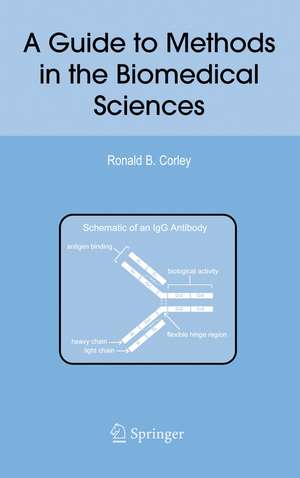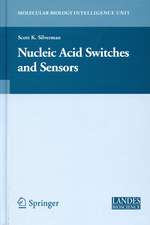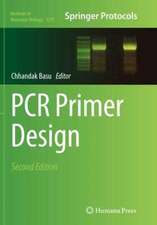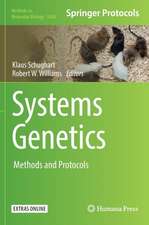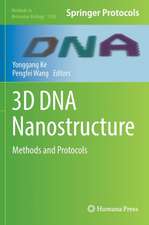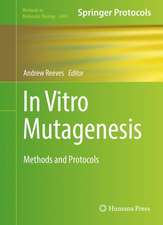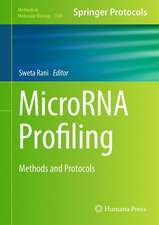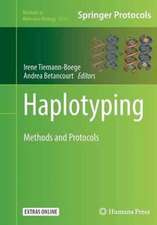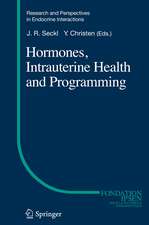A Guide to Methods in the Biomedical Sciences
Autor Ronald B. Corleyen Limba Engleză Paperback – 15 oct 2010
The historical background (including some interesting anecdotes) leading to the development of ground-breaking techniques is described, especially of those that significantly advanced the field of biomedical research. Advances that earned their inventors prestigious Nobel Prizes are emphasized.
The book is divided into six sections, highlighting selected methods in protein chemistry, nucleic acids, recombinant DNA technology (including forensic-based methods), antibody-based techniques, microscopy and imaging, and the use of animals in biomedical sciences.
| Toate formatele și edițiile | Preț | Express |
|---|---|---|
| Paperback (1) | 707.50 lei 6-8 săpt. | |
| Springer Us – 15 oct 2010 | 707.50 lei 6-8 săpt. | |
| Hardback (1) | 713.54 lei 6-8 săpt. | |
| Springer Us – 17 dec 2004 | 713.54 lei 6-8 săpt. |
Preț: 707.50 lei
Preț vechi: 744.73 lei
-5% Nou
Puncte Express: 1061
Preț estimativ în valută:
135.37€ • 141.36$ • 111.79£
135.37€ • 141.36$ • 111.79£
Carte tipărită la comandă
Livrare economică 15-29 aprilie
Preluare comenzi: 021 569.72.76
Specificații
ISBN-13: 9781441935601
ISBN-10: 1441935606
Pagini: 144
Ilustrații: XVI, 126 p.
Dimensiuni: 155 x 235 x 8 mm
Greutate: 0.21 kg
Ediția:Softcover reprint of hardcover 1st ed. 2005
Editura: Springer Us
Colecția Springer
Locul publicării:New York, NY, United States
ISBN-10: 1441935606
Pagini: 144
Ilustrații: XVI, 126 p.
Dimensiuni: 155 x 235 x 8 mm
Greutate: 0.21 kg
Ediția:Softcover reprint of hardcover 1st ed. 2005
Editura: Springer Us
Colecția Springer
Locul publicării:New York, NY, United States
Public țintă
ResearchCuprins
Detection and Analysis of Proteins.- Detection and Analysis of Nucleic Acids.- Recombinant DNA Techniques: Cloning and Manipulation of DNA.- Antibody-Based Techniques.- Microscopy: Imaging of Biological Specimens.- The Derivation and Manipulation of Experimental Animals in Biomedical Sciences.
Textul de pe ultima copertă
A Guide to Methods in the Biomedical Sciences gives a basic description of common methods used in research. This is not intended to be a methods book. Rather, it is intended to be a book that outlines the purpose of the methods described, their limitations and provide alternative approaches as appropriate. Thousands of methods have been developed in the various biomedical disciplines and those covered in this book represent the basic, essential and most widely used methods in several different disciplines.
The historical background (including some interesting anecdotes) leading to the development of ground-breaking techniques are described, especially those that significantly advanced the field of biomedical research. Advances that earned their inventors prestigious Nobel Prizes are emphasized.
The book is divided into six sections, highlighting selected methods in protein chemistry, nucleic acids, recombinant DNA technology (including forensic based methods), antibody-based techniques, microscopy and imaging, and the use of animals in biomedical sciences.
The historical background (including some interesting anecdotes) leading to the development of ground-breaking techniques are described, especially those that significantly advanced the field of biomedical research. Advances that earned their inventors prestigious Nobel Prizes are emphasized.
The book is divided into six sections, highlighting selected methods in protein chemistry, nucleic acids, recombinant DNA technology (including forensic based methods), antibody-based techniques, microscopy and imaging, and the use of animals in biomedical sciences.
Caracteristici
Thousands of methods have been developed in the various biomedical disciplines and those covered in this book represent the basic, essential and most widely used methods in several different disciplines. Includes supplementary material: sn.pub/extras
